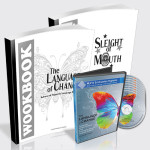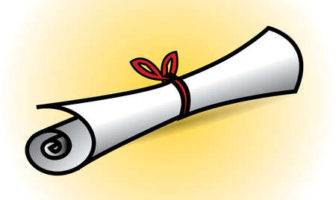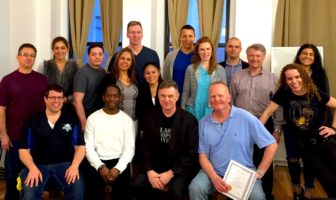
How DO you get to Carnegie Hall?
The Story Behind “The Language of Change”
How lessons learned from classical piano training can help you to become a virtuoso at Hypnotic Language patterns.
I admit it. I’m a slow learner.
Back when I was first learning NLP and Ericksonian Hypnosis, the Ericksonian Hypnotic Language Patterns baffled me.
Embedded commands? Indirect suggestions? Therapeutic metaphors?
I knew guys like Kenrick Cleveland and Tad James who seemed to be great at using them, but I didn’t get it.
Tony Robbins used “embedded commands” all the time. Richard Bandler was a language wizard and yet I couldn’t figure it out.
Then something happened that changed my learning curve immensely. I was at a Dave Dobson “Fun Shop” in Friday Harbor, Washington. I don’t remember if it was my first fun shop or my second but at the end of the two-week training I ended up playing a little piano for the some of the class members at a local pub. Dave and his wife Carol were in attendance. I played a number of pieces like Scott Joplin and a 12-bar blues that fit the environment, but added some classical pieces as well (Including a somewhat improvised version of the “Canon in D” by Pachelbel because Carol requested it).
It was all good fun but after the last piece Dave did something I’ll never forget. He came over, put his hand on my shoulder and said to everyone that he was confident I would become a competent hypnotist someday because I would apply the same diligence to practicing the art of hypnosis that I had to learning to play the piano.
(I didn’t realize until years later that he had done a “meta-five” on me.)
I was floored. Dave didn’t pass out compliments easily.
But this was both a compliment and a challenge. How am I going to apply learning piano to learning hypnosis?
The question haunted me long after I left the island.
I started by reading the book, “The Structure of Magic” by Bander and Grinder. I discovered that one of the appendix’s had a list of presuppositions. So I wrote out each one of them on an index card, wrote my own examples, and practiced using them with people.
Then I took the book, “Patterns 1,” also by Bandler and Grinder, copied out each Ericksonian Language onto a 3×5 card and each day I’d take a card and practice that one pattern with clients, friends, bus drivers, you name it.
It was like practicing scales and arpeggios and finger exercises in music.
I transcribed trance inductions by Dobson, Bandler and others to see how they used them in a trance context and also conversationally.
I wrote out whole scripts to use with clients which helped me put it all together (but then learned to not use them because it was more important to focus on the client).
Over time I accumulated a large collection of material and got pretty good at using it.
I decided to take those index cards and put it together as one document so I could share it with my students during my Neo-Ericksonian Hypnosis classes. I called it “The Language of Change.” It became a central part of how I teach Hypnosis.
But then the title itself began to bother me a little. Because there are more “Languages of Change” than just Ericksonian Language patterns.
There’s Sleight of Mouth, of course. And Robert Cialdini’s “6 Patterns of Influence” from his seminal book “Influence.”
I began to wonder, what it you combined Sleight of Mouth with Ericksonian Language pattens and tied it down with Cialdini’s patterns?
It is a powerful approach, to say the least.
In 2010 I taught a 2 1/2 day training of ALL this material and had it professionally video taped.
The “Language of Change” DVD set is, perhaps, one of the most comprehensive examinations of Conversational Hypnosis you’ll find. Filled with examples and suggestions of how to use them.
It covers the following
• Sleight of Mouth – a complete training with all the patterns taught
• Ericksonian Hypnotic Language patterns
• the “Reverse Meta Model”
• Presuppositions
• the “Six Patterns of Influence” by Robert Cialdini (and how to use them conversationally)
 It comes with 8 DVDs and 2 workbooks (the complete “Sleight of Mouth” workbook and the “Language of Change” workbook)
It comes with 8 DVDs and 2 workbooks (the complete “Sleight of Mouth” workbook and the “Language of Change” workbook)
It represents more than two decades of collecting, refining and rethinking the pedagogy.
If you are serious about improving your language skills, the value is priceless.
Find it on this website under Products.





 Download Doug O’Brien’s paper,
“Be your Best with Self Hypnosis”
Download Doug O’Brien’s paper,
“Be your Best with Self Hypnosis”